Abstract
The evolution of individual or subgroup differences in odors of halictine bees is suggested from possible widespread intraspecific variation in pheromones. An important result of such variation may be maintenance of genetic polymorphisms; in nesting Hymenoptera odor differences may also facilitate individual nest recognition. In Lasioglosum zephyrum males habituate to odors of different females and perhaps thus save time by not trying to copulate with nonreceptive individuals. Guards (females) at nest entrances distinguish their few nestmates (other females) from other conspecific individuals by odors, seemingly pheromones. Duration of the habituation in L. zephyrum is at least an hour (perhaps much more) for males in relation to females and 6 or 7 days for guards in relation to nestmates. Studies of pheromones should take into consideration the possibility of pheromonal polymorphism in any species and the likelihood that it may be significant from biological and practical viewpoints.
Full text
PDF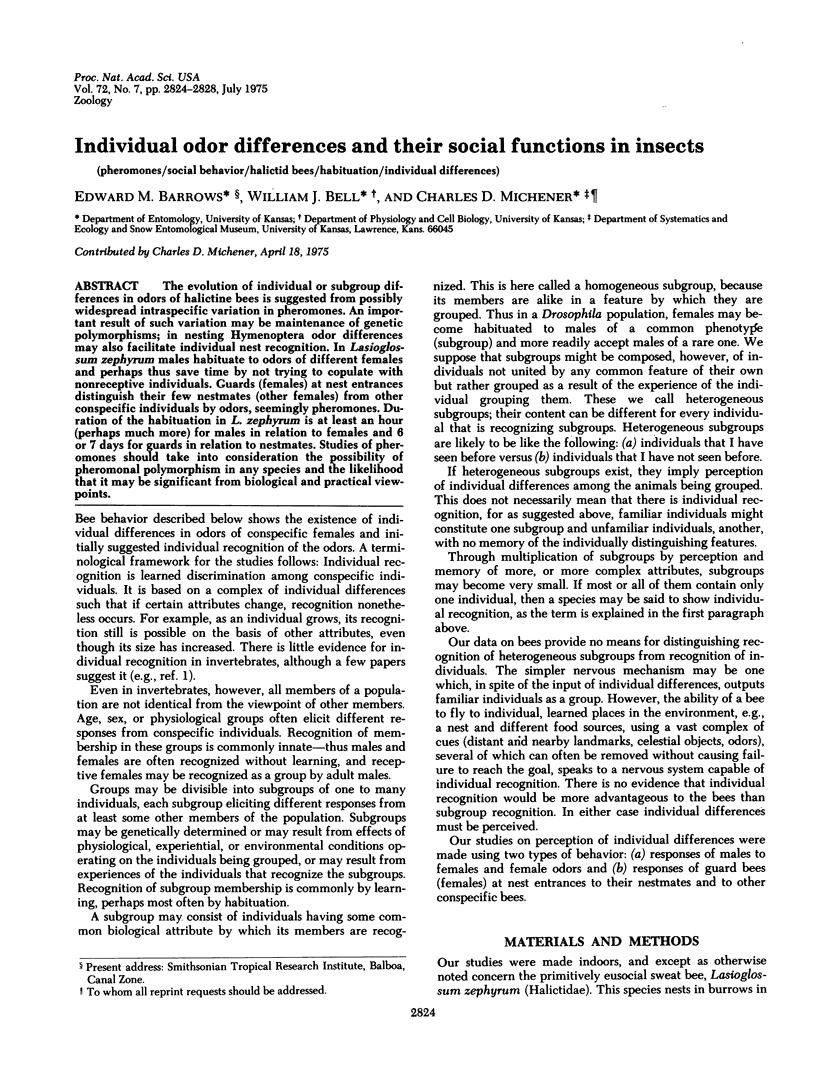
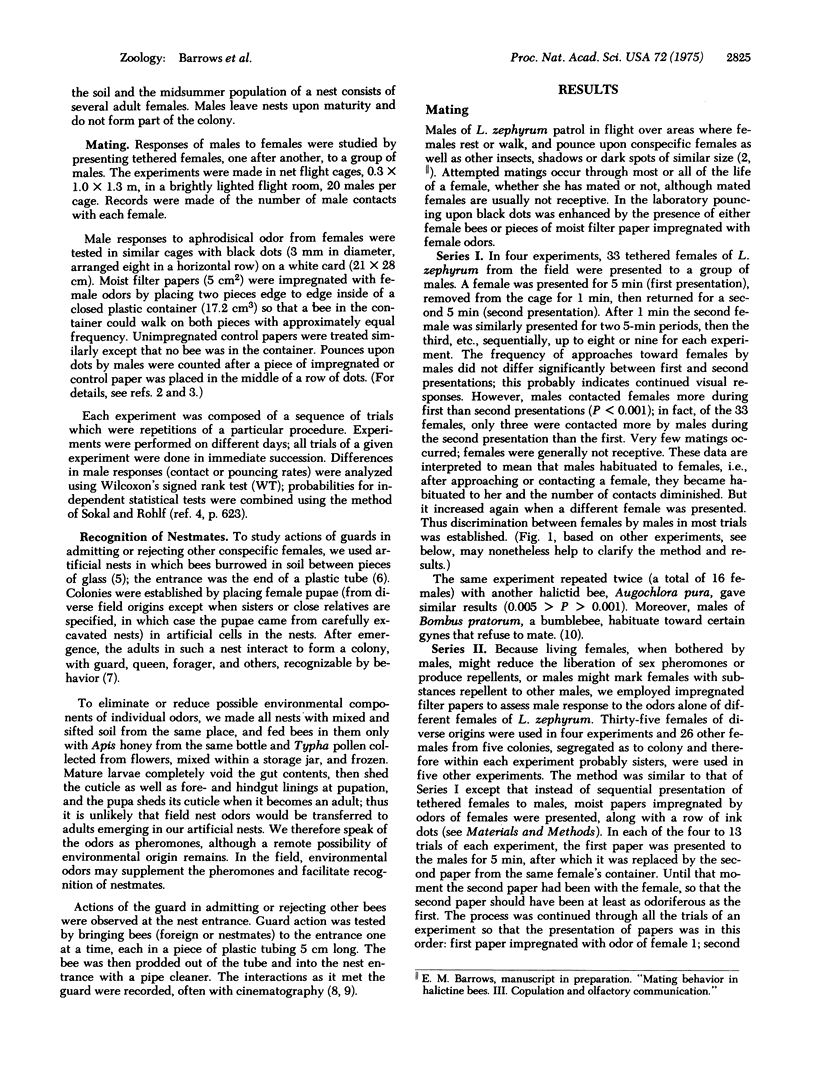
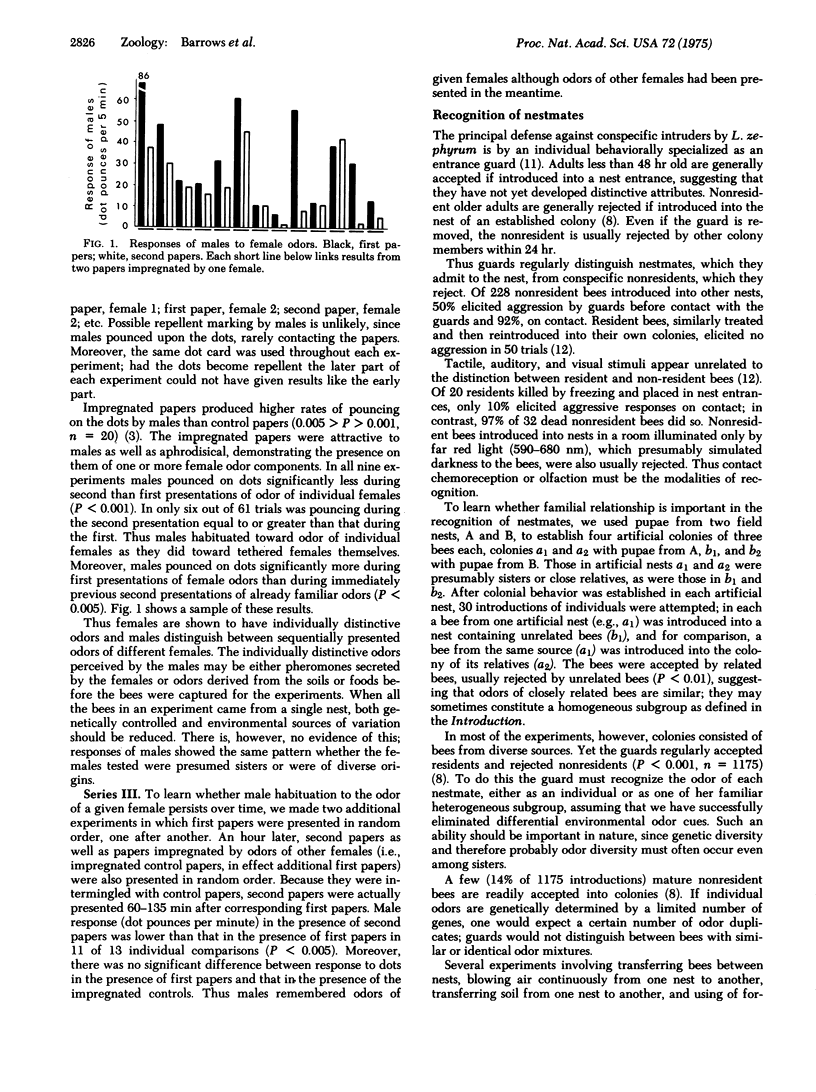
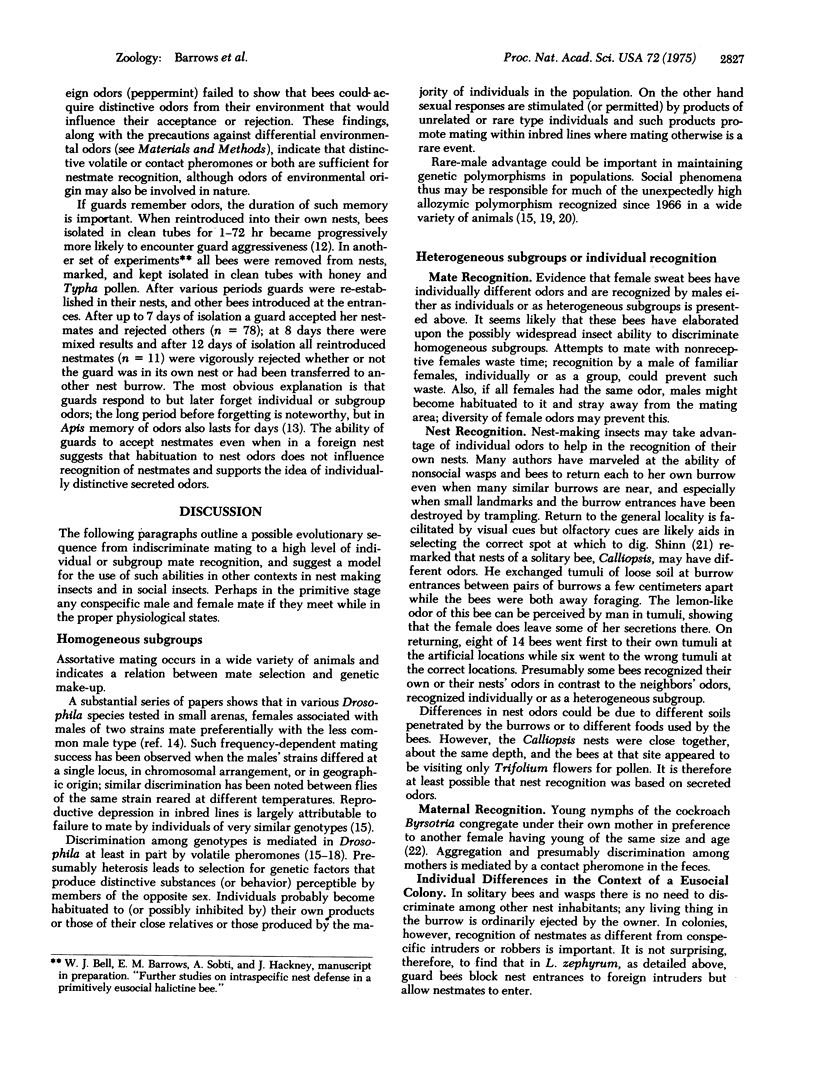
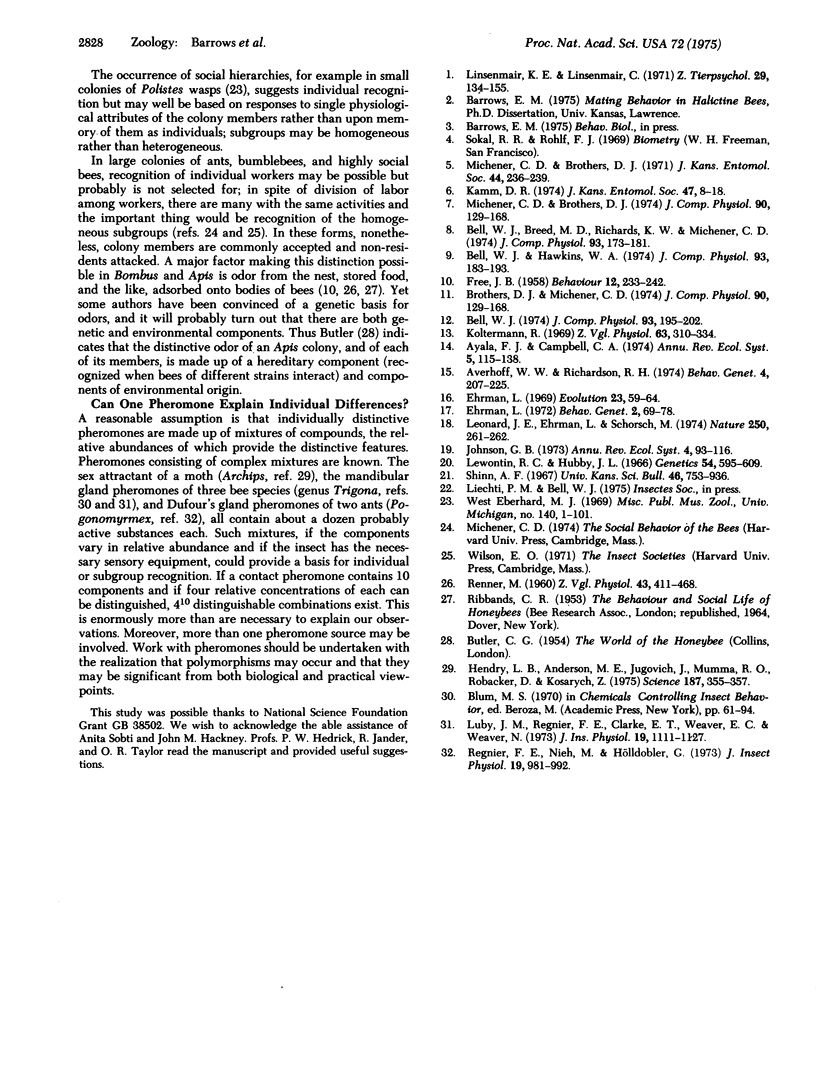
Selected References
These references are in PubMed. This may not be the complete list of references from this article.
- Averhoff W. W., Richardson R. H. Pheromonal control of mating patterns in Drosophila melanogaster. Behav Genet. 1974 Sep;4(3):207–225. doi: 10.1007/BF01074155. [DOI] [PubMed] [Google Scholar]
- Eduard K., Linsenmair C. Paarbildung und Paarzusammenhalt bei der monogamen Wüstenassel Hemilepistus reaunuri (Crustacea, Isopoda, Oniscoidea. Z Tierpsychol. 1971 Sep;29(2):134–155. [PubMed] [Google Scholar]
- Ehrman L. A factor influencing the rare male mating advantage in Drosophila. Behav Genet. 1972 Mar;2(1):69–78. doi: 10.1007/BF01066735. [DOI] [PubMed] [Google Scholar]
- Hendry L. B., Anderson M. E., Jugovich J., Mumma R. O., Robacker D., Kosarych Z. Sex pheromone of the oak leaf roller: a complex chemical messenger system identified by mass fragmentography. Science. 1975 Jan 31;187(4174):355–357. doi: 10.1126/science.1111108. [DOI] [PubMed] [Google Scholar]
- Leonard J. E., Ehrman L., Schorsch M. Bioassay of a Drosophila pheromone influencing sexual selection. Nature. 1974 Jul 19;250(463):261–262. doi: 10.1038/250261a0. [DOI] [PubMed] [Google Scholar]
- Lewontin R. C., Hubby J. L. A molecular approach to the study of genic heterozygosity in natural populations. II. Amount of variation and degree of heterozygosity in natural populations of Drosophila pseudoobscura. Genetics. 1966 Aug;54(2):595–609. doi: 10.1093/genetics/54.2.595. [DOI] [PMC free article] [PubMed] [Google Scholar]


